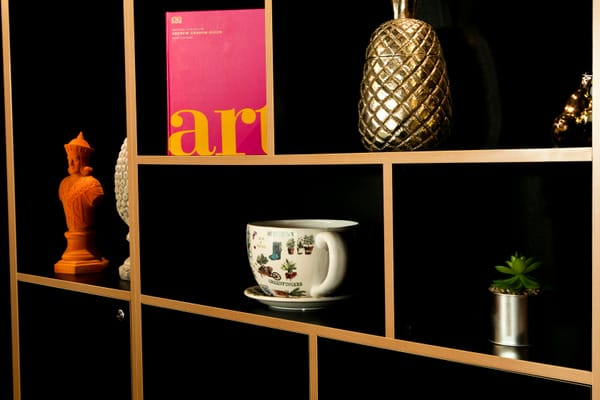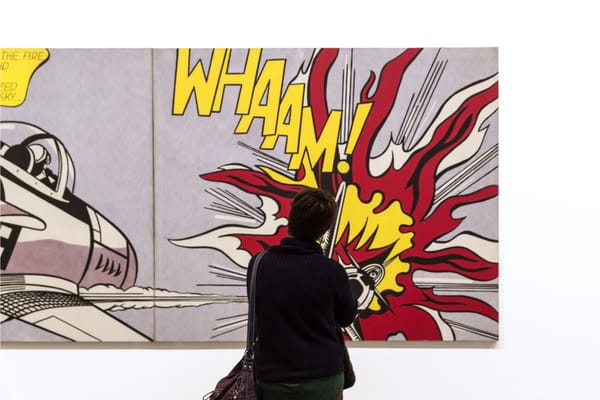Hilma af Klint: The Artist Who Channeled Spirits to Create Abstract Art
Hilma af Klint was a groundbreaking artist who believed her abstract paintings were guided by spiritual entities. Her vibrant works, rich with occult symbolism, predate the abstract art of Kandinsky and Mondrian, making her a pioneering figure in art history.
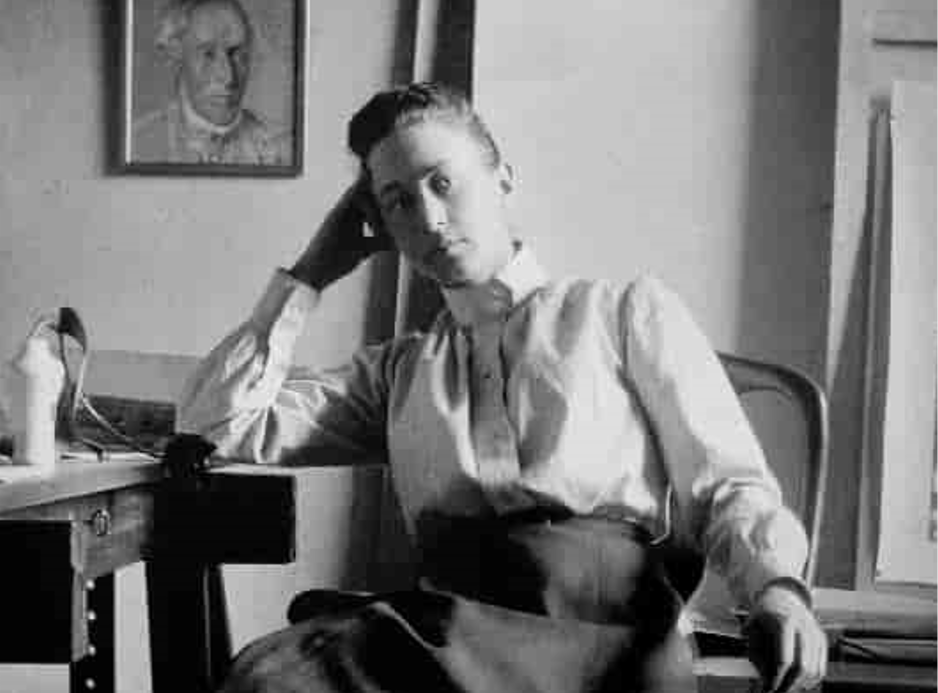
It’s 1906 in Stockholm. A low, flickering candle casts shadows that dance across the walls of a small, dimly lit room, where five women sit in a circle, hands joined, eyes closed. In the center, a glass of water trembles slightly, as if from an unseen breath. The air is thick with anticipation and mystery, for these women have gathered to commune with beings from another realm. Among them is Hilma af Klint, a painter whose hand has been a vessel for the unseen, her work directed by forces beyond the physical world.
For years, Hilma had felt that her art was not solely her own. From a young age, she’d experienced visions—fleeting images, strange symbols, and colors that seemed to emerge from a place she could not name. When she met the other members of The Five, a spiritualist group of like-minded women, she felt she had found her place. They believed in communication with spirits, particularly the “High Masters”, entities they said resided in higher planes of existence. Together, they conducted séances, each woman acting as a channel for the messages the spirits wished to share.
On this night, as they hold hands, Hilma feels a warmth spreading through her fingertips, up her arms, and into her chest. She can sense the presence of something—or someone—waiting to speak. Her eyes still closed, she listens as one of her companions, a medium, begins to murmur. The words are soft, almost inaudible, but Hilma understands: “They are here.” The others sit in reverent silence, waiting, as a gentle hum seems to vibrate through the room, a frequency just at the edge of hearing.
In a trance-like state, Hilma reaches for her sketchbook. Her hand moves with an urgency that feels foreign to her, as if someone else is guiding it. Shapes, symbols, and colors begin to spill across the paper—swirling circles, geometric forms, lines intersecting and spiraling. Her paintings would later be known for this distinct use of shapes and colors—circles for unity, spirals for growth, and intertwining lines for the interconnectedness of all things. These symbols were not arbitrary; they were messages, embedded with meanings from the High Masters, meant to be deciphered by future generations.
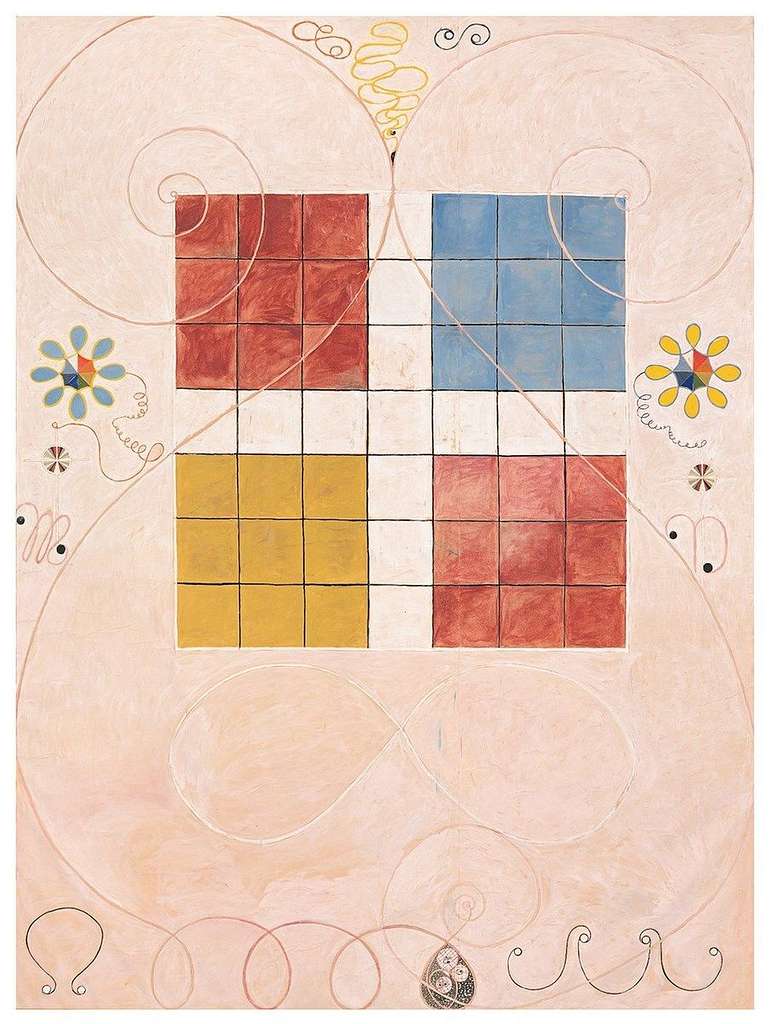
The Paintings for the Temple: A Spiritual Quest in Color
Over the coming years, Hilma would create hundreds of paintings in this way. She called them her Paintings for the Temple, and they were intended to form a sacred series that conveyed a vision of reality inspired by the guidance she received from the High Masters. Her works were vibrant and abstract, filled with elements of sacred geometry, including ascending spirals, intertwining lines, and fluid, overlapping shapes. These forms were her way of depicting a journey of the soul, an evolution that spanned across spiritual planes.
One of her most famous series, The Ten Largest, depicted the stages of human life in large, imposing canvases, each piece bursting with color and intricate patterns. Ranging from Childhood to Old Age, these paintings convey the soul’s transformation and growth, expressed through swirling forms and bold hues of orange, blue, and yellow. These works, often reaching nearly ten feet in height, create an immersive experience, as if inviting viewers to step directly into her vision.
The Primordial Chaos series, another part of her Paintings for the Temple, depicts abstract shapes against vibrant backgrounds, symbolizing the forces of creation and the origins of life. In these pieces, Hilma layered colors and textures, conveying her belief in the interconnectedness of the material and spiritual realms. To her, each line and shade held meaning, reflecting the balance between light and dark, the visible and the invisible.
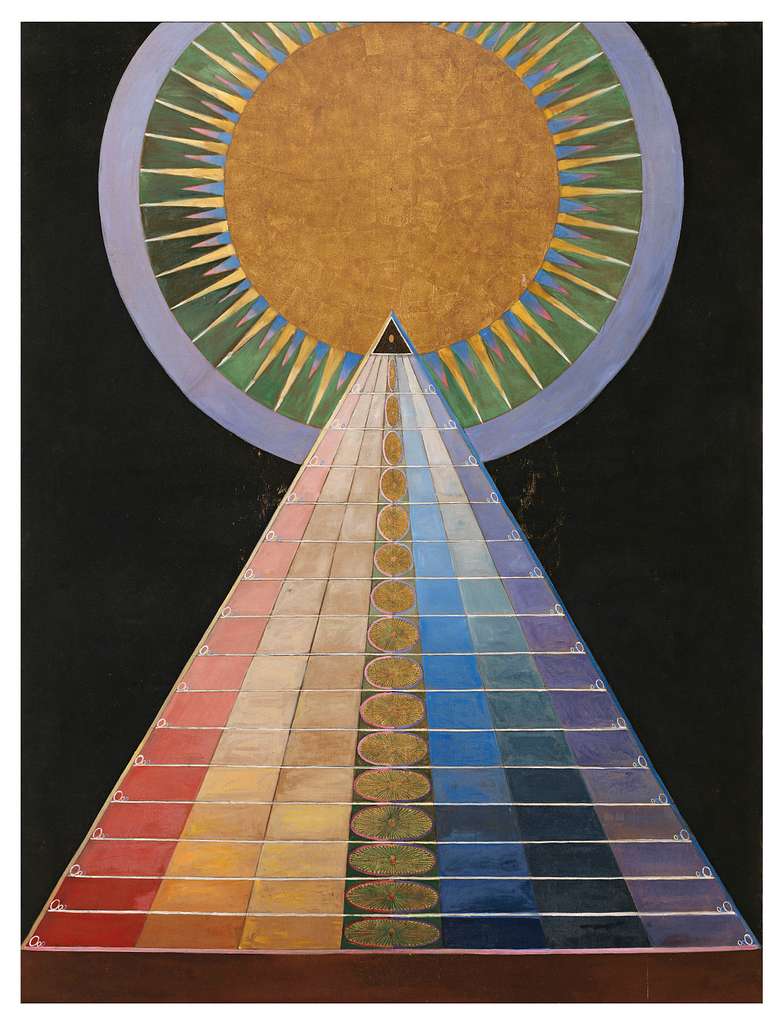
Spiritual Collaboration with The Five
Hilma’s art wasn’t created in isolation. Her group, The Five, played a central role in her spiritual journey. Together, they would gather for meditative practices, drawing and writing what they perceived as messages from the spirits. These sessions became rituals, during which each woman would create automatic drawings, letting their hands move freely, directed by unseen forces. Through their shared visions, they each believed they were acting as vessels for divine communication.
The Five kept meticulous records of their séances, recording everything from the words they channeled to the symbols that emerged. These practices formed the foundation of Hilma’s work, and she often described her paintings as collaborative creations with the High Masters, as if the spirits themselves were painting through her. She saw herself as a humble servant to a greater vision, creating works not for her own pleasure, but as visual translations of a hidden, spiritual language.
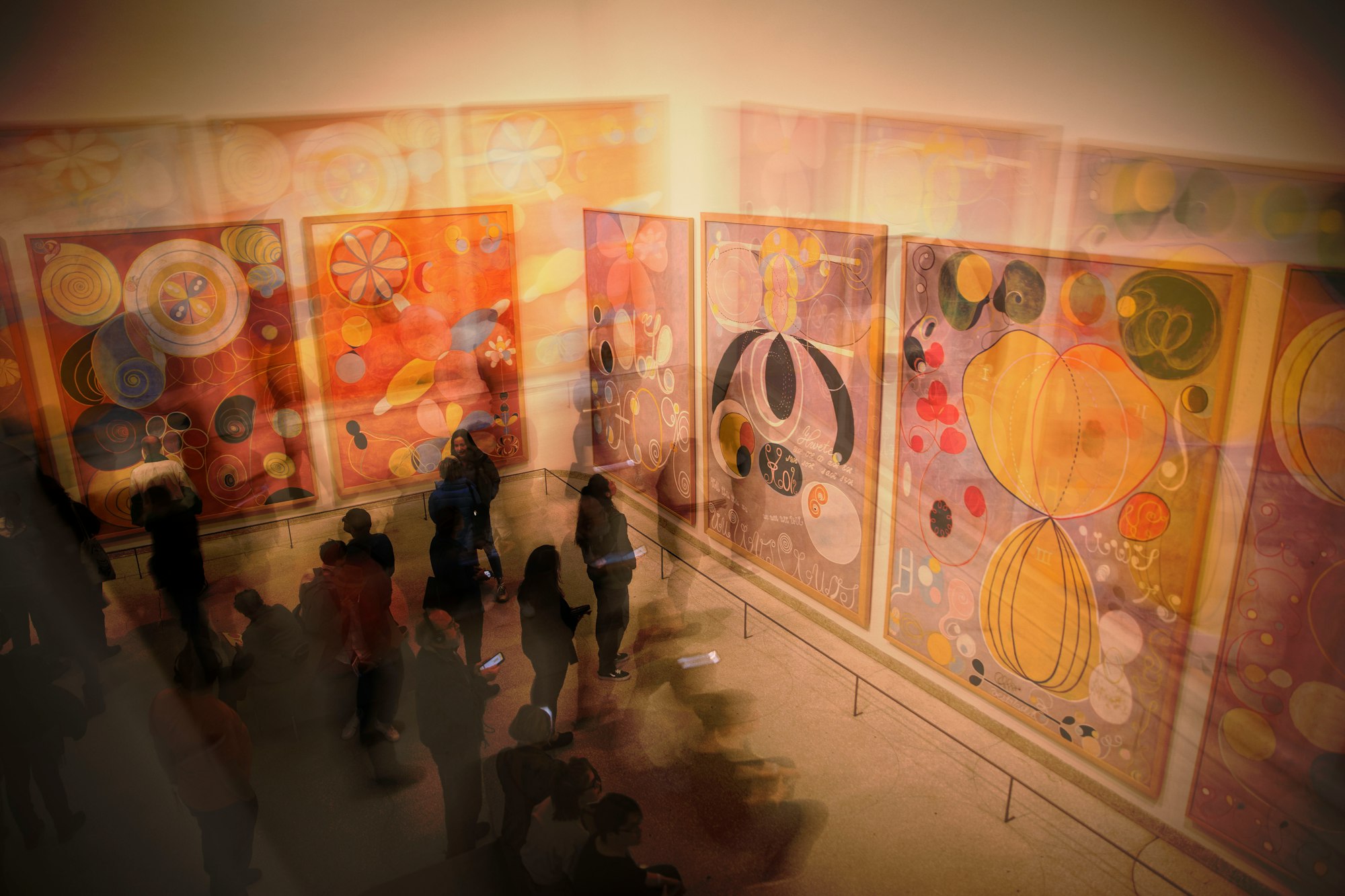
A Legacy Revealed: The World Unveils Her Work
Hilma’s studio was a temple in itself, filled with brushes and canvases, and the air seemed to carry the vibrations of the forces she channeled. She worked tirelessly, driven by the belief that her paintings were not meant for her contemporaries but for future generations. In her will, she left instructions that her work remain hidden for at least twenty years after her death, convinced that the world wasn’t yet ready to understand the visions she had been given.
When her paintings were finally unveiled in the late 20th century, the art world was stunned. Here were vibrant, swirling abstractions that predated the works of Kandinsky and Mondrian, seeming to echo a style that had yet to be invented. Her legacy blossomed, and exhibitions of her work drew those who saw not just art but the echoes of a mystical journey. She is now celebrated as a pioneer, an artist who melded the seen and unseen into a singular visual language.
Hilma af Klint’s paintings continue to captivate viewers, her work often described as feeling “alive”. Standing before her vast canvases, one can almost sense the presence of the High Masters, those enigmatic beings she believed guided her hand. Her legacy is that of a spiritual seeker, one who saw art as a bridge to the divine. Today, her paintings are admired as much for their beauty as for the mystery they contain, inviting viewers to become part of her otherworldly vision.
Epilogue: The Power of Art as a Portal
As you leave her story, it’s impossible not to reflect on the enduring influence of the mystical in art. Hilma af Klint’s paintings are not simply pieces to be admired from afar; they are invitations to enter another realm. In each symbol, each color, lies a call to explore the mysteries of existence, to consider what lies beyond the material world. Her work resonates with a question that lingers long after viewing: could art be a portal, a glimpse into realms unseen, as Hilma af Klint so fervently believed?
For those who stand before her work, the answer may come as a faint whisper, carried on colors and symbols—a reminder that sometimes, the most profound journeys are the ones we take within.
ART Walkway News




